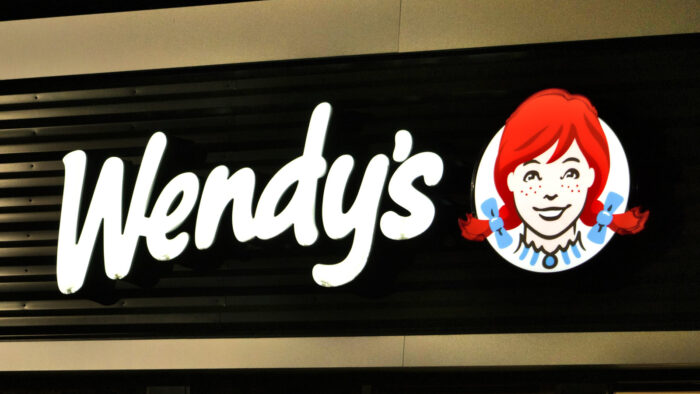
Wendy’s mission statement and vision statement pertain to business operations specific to the foodservice industry. In its mission statement, the company’s emphasis is on providing the best organizational output to satisfy diners. In its vision statement, Wendy’s stresses the highest performance relative to competitors.
These aspects of the corporate mission and vision statements show that Wendy’s goals include having high customer satisfaction and high profitability.
Wendy’s generic competitive strategy and intensive growth strategies represent these goals, in terms of the strategic approaches used to develop the restaurant chain.
The competitive advantages and competencies stated in the SWOT analysis of Wendy’s are fundamental to achieving the goals of the company’s corporate vision and mission statements.
Wendy’s Business Purpose
Wendy’s business purpose is “to create joy and opportunity through food, family, and community.” Like the mission statement and vision statement, this purpose statement shows operations in the foodservice industry.
Considering the factors of opportunity and community, this business purpose informs Wendy’s corporate social responsibility (CSR) and ESG strategy, especially in creating a positive mindset for addressing business and community concerns.
Wendy’s Mission Statement
Wendy’s mission statement is “Exceeding our guests’ expectations in product, service, and overall dining experience.” This mission gives importance to excellence in the foodservice business. The components of Wendy’s mission statement are as follows:
- Exceeding guests’ expectations
- Product and service
- Overall dining experience
Wendy’s mission statement underscores the objective of exceeding customers’ expectations. To exceed these expectations, the company’s internal processes maintain high-quality outputs that go beyond what customers expect.
Wendy’s operations management policies and programs are designed to support high-quality products and service for the satisfaction of this mission statement.
Also, the product and service components of Wendy’s mission statement show that the goals are not just for the food and beverage items provided to consumers, but also for the quality of service provided at the company’s restaurants. This encompassing scope of the corporate mission deals with all aspects of the fast-food business organization.
Regarding “overall dining experience,” this mission statement directs attention to “experience” as what the business offers, instead of just food or the service of providing food.
Wendy’s organizational culture (corporate culture) maintains the human resource characteristics for the desired service quality and dining experience based on this corporate mission statement.
Wendy’s Vision Statement
Wendy’s vision is “To become the world’s most thriving and beloved restaurant brand.” In this vision statement, top performance in the industry is the goal. The components of Wendy’s vision statement are as follows:
- Global scope
- Most thriving and beloved
- Restaurant brand
In specifying “world,” Wendy’s vision statement orients toward international growth. This global scope puts the fast-food hamburger restaurant chain in competition with various multinational foodservice firms and smaller regional and local ones.
In addition to this global scope, excellence and market leadership are implied in Wendy’s vision statement in setting the goal of becoming the “most thriving and beloved” foodservice business.
The marketing strategies applied through Wendy’s marketing mix (4P) help create a positive brand image that customers love. For example, the company’s advertisements highlight the quality of its burgers to differentiate the business from competing fast-food restaurant chains.
Regarding excellence and leadership, to satisfy its corporate vision, the business must emerge at the top despite the high level of competitive rivalry determined in the Five Forces analysis of Wendy’s.
To achieve the goals and objectives of this vision statement, the company must withstand the competitive pressure involving McDonald’s, Burger King, Dunkin’, KFC, Subway, and Arby’s, as well as Starbucks and Tim Hortons.
With these factors, the “restaurant brand” component of Wendy’s corporate vision statement sets the strategic path of keeping business operations within the foodservice industry.
Implications of Wendy’s Mission & Vision
The purpose of Wendy’s mission statement and vision statement is to direct the business to a higher performance level and a leadership position in the industry.
The product (e.g., menu items), food service, and customer experience are highlighted in the corporate mission statement. On the other hand, Wendy’s top-level performance in the global market is the emphasis of the corporate vision statement.
Considering that both statements refer to foodservice operations, the company’s goals remain focused on its fast-food hamburger restaurant chain operations.
Also, the mission statement and the vision statement show that dining experience is now a priority of Wendy’s strategies as the business differentiates itself from competitors.
References
- Hasançebi̇, B., Keski̇n, E., & Yorganci, B. (2024). A bibliographic research on globalization strategies of fast-food businesses. Journal of Tourism & Gastronomy Studies, 12(2), 1049-105.
- Phuong, N. T. H. (2024). Business strategy concept: A systematical review. Journal of Knowledge Learning and Science Technology, 3(2), 128-142.
- The Wendy’s Company – Form 10-K.
- The Wendy’s Company – Franchising.
- The Wendy’s Company Reports Second Quarter 2025 Results.
- The Wendy’s Story.
- Yun, J. J., Zhao, X., Del Gaudio, G., Della Corte, V., & Sadoi, Y. (2025). Leveraging business model innovation through the dynamics of open innovation: A multi-country investigation in the restaurant industry. European Journal of Innovation Management, 28(4), 1342-1365.